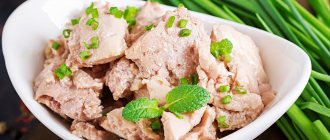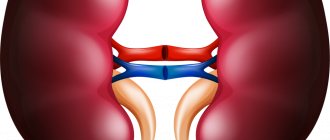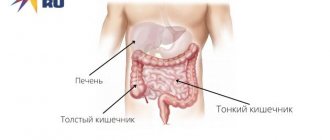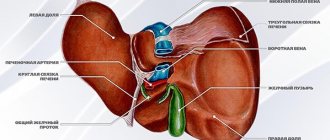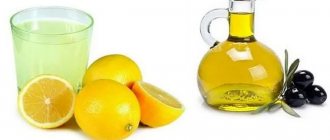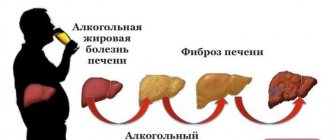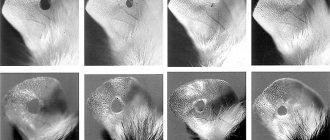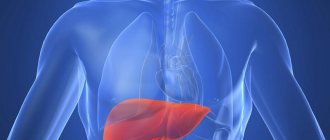January 16, 2012
Liver functions cannot be reproduced artificially. How to keep this unique organ healthy?
The liver is the largest internal human organ and the largest gland. It is often called the “biochemical factory of the body.” The liver performs a large number of important functions, including the production of proteins necessary for the structure of tissues, the breakdown of fats and carbohydrates, and the filtration of blood. During filtration, waste products from the body are removed and the effects of alcohol and other toxins are neutralized.
Where is the liver located?
Liver hit
Many people know the expression “blow to the liver.” It quite accurately expresses the essence of the effect of alcohol and smoking on a vital organ. But what about a traditional glass of red wine? Is it really that bad to drink a glass of beer in the evening? You will find answers to these and other questions in the online conference on the topic “Liver and bad habits.”
The liver is located in the upper right side of the abdominal cavity, above the small intestine and pancreas. It weighs about one and a half kilograms, and its dimensions are about 20 cm in length and 17 cm in width. The liver is an unpaired organ and completely unique. Until now, its functions cannot be reproduced artificially for a long time. But liver cells are able to recover quickly.
Kidneys: introduction to leeches
Kidneys - alas! – also suffer from an unhealthy lifestyle. Due to metabolic disorders, lack of vitamins (especially vitamin A), consumption of fatty meats and poor-quality drinking water, stones and sand form in them. There are many methods for cleaning this organ: some experts recommend fighting kidney problems with the help of juices, others advise taking magnetized water, others prescribe rosehip decoction and a watermelon diet. But still, the most effective option is hirudotherapy, treatment with leeches.
What is she doing?
The liver performs several functions: - neutralizes foreign and toxic substances, turning them into less toxic compounds that are easily removed from the body, - meets the body's needs for glucose, which is produced in the liver from other energy sources, - stores and replenishes energy reserves for emergencies in in the form of glycogen, - stores a large supply of blood, - produces and stores some vitamins: fat-soluble and water-soluble B12, - stores a supply of some microelements: iron, copper, cobalt, - synthesizes cholesterol, lipids and phospholipids and regulates fat metabolism in the body, - produces bilirubin and bile acids necessary for digesting food. All these various functions are performed by liver cells - hepatocytes
. The liver is made up of 80 percent of these unique cells. They are no longer found anywhere in the body.
Intestines: water procedures
Typically, detoxification programs begin with cleansing the gastrointestinal tract. After all, it is through it that everything that enters the body passes through, including toxins. When unnecessary substances are not eliminated naturally, gradually decomposing, they begin to poison us from the inside. If you have irregular bowel movements, frequent bloating, weakness, and bad breath, then it’s time to go to a medical facility and sign up for colon hydrotherapy (or colon hydrotherapy) sessions. Simply put, this is flushing the intestines with water. And don’t even think about dealing with the problem yourself with an enema!
Otherwise, you risk destroying the natural microflora and developing other serious complications. But under the supervision of specialists, the entire process is painless and effective. The composition of the injected liquid is selected individually. This could be, for example, water with herbal infusions, antiseptics, or just saline solution. Typically two to eight sessions are required. Each lasts approximately an hour. After cleansing, the intestines free the villi, which were previously clogged with slag deposits. This means digestion improves, and you can lose a few kilograms this way.
How does the liver cleanse the blood?
All the blood that visits the small intestine through the blood vessels passes through the portal vein into the liver and is passed through the rows of hepatocytes, like a sieve. There, various toxins and metabolic byproducts are converted into less harmful substances that can be eliminated from the body. Thus, the liver cleanses the blood of bilirubin - the result of the breakdown of red blood cells - and ammonia formed during the breakdown of proteins. Alcohol, a strong toxin with which a person poisons himself voluntarily, is also removed from the blood. From the liver, blood enters the inferior vena cava and goes further to the heart, which distributes it throughout the body.
The truth about waste and toxins
Advertising constantly asks us to cleanse ourselves of waste and toxins. It turns out that everything is polluted: the stomach and intestines, the liver and kidneys, bones and joints, blood and lymph.
What are wastes and toxins? Where do they come from in the body? And is it necessary to cleanse yourself of them?
Slags and toxins:
The term “slag” does not exist in scientific medicine. Adherents of cleansing the body by toxins mean harmful waste generated in the process of life, and include fecal and bilirubin stones, old bile and mucus, salts and oxides of heavy metals, preservatives, and pesticides. They accumulate in the body, since the body itself cannot cope with them, and poison it. Therefore, cleansing is necessary - with enemas, juices, various procedures, fasting, etc.
In contrast to waste, toxins are a term used in medicine. Simply put, these are poisons that are formed when any malfunction occurs in the functioning of the body, that is, during a disease or pathological condition. And they really have a negative impact on health. But in this case, it is not cleaning that is required, but treatment, which is what doctors do.
In a healthy person, the body copes well with removing all waste substances on its own. Nature has made sure that all our organs and systems work harmoniously, self-regulate and self-clean. The body is a well-equipped, perfect laboratory in which various biochemical processes continuously take place, which maintains it in a stable balance. Is it necessary to interfere in this work without reason?
Is it necessary to cleanse the intestines?
The very first thing it is recommended to start cleansing the body with is cleansing the intestines. It is allegedly clogged with fecal stones, which accumulate up to 5 kg by the middle of life. Of course, people get scared: 5kg in the colon, no joke. And they do daily enemas, drink laxatives under the guise of cleansing products, and fast.
What happens as a result?
The colon, accustomed to having an enema do everything for it, after some time simply stops working, and then it is necessary to empty the intestines of feces only with the help of an enema or a laxative. In addition, when washing with an enema, beneficial microflora, which is involved in the last stage of food breakdown, is washed out of the colon. As a result, the body’s mechanism for releasing waste from the digestive process is disrupted. As for fasting, it is simply dangerous to carry out it without medical supervision. And it is not indicated for everyone, but there are plenty of contraindications to this serious procedure.
What are the dangers of a liver cleanse?
Another very popular remedy is liver cleansing with vegetable oil and lemon juice. It consists of alternately taking juice and oil on an empty stomach.
What happens in the body?
Vegetable oil is a strong laxative, and the intestines will definitely be cleansed. Well, lemon juice drunk on an empty stomach, if its secretion is increased, will cause severe inflammation of the mucous membrane. The liver will begin to process vegetable oil, bile will accumulate in the gallbladder and be released into the stomach. If the discharge is very strong (and it will be so due to vegetable oil), the stones, if they are in the gallbladder, will move out of place and can block the bile duct. And this is an urgent operation. Here's what you can do for yourself if you decide to cleanse your liver a little.
In medicine, there is a procedure - tubage: the patient drinks mineral water on an empty stomach and lies on a heating pad on his right side. Tubage also stimulates bile secretion, but does it more gently. So, this procedure is also performed only according to medical indications.
A healthy liver does not need to be cleansed: neither with unsafe procedures nor with dietary supplements. It cleanses the body of toxins that enter it. Well, if the liver is sick, it should be treated, but not cleansed.
To clean or not to clean?
It must be said that there is some truth in the reasoning of adherents of cleansing the body: yes, we live in an unfavorable ecological environment, we eat unhealthy food and drink poor-quality water, indulge in excesses and do not give up bad habits, move little and chronically do not get enough sleep, are nervous, anxious and We're angry. All this undermines health. But purges will not help restore it, and in some cases may even undermine it.
But there is a way out, and the simplest one: a healthy lifestyle, proper nutrition and a positive attitude. No matter how trivial these remedies are, they work. Just don’t treat this with fanaticism – it doesn’t lead to any good.
Prepared by:
Gastroenterologist-nutritionist – Kosnikovich L.N.
How does the liver store glucose?
The liver stores energy reserves in the form of glycogen
. This so-called animal starch is the main form of glucose storage. It is deposited in the form of granules in liver and muscle cells.
Alcoholic liver disease
Alcohol can completely destroy the liver in just a few years. Drinking alcohol leads to alcoholic liver disease (ALD), which ends in death. Find out the right way to avoid this outcome.
However, to nourish the entire body in emergency cases, only those glycogen reserves stored by hepatocytes can be used. Hepatocytes can accumulate amounts of glycogen reaching eight percent of their mass. The total mass of glycogen in the liver of adults can reach 100-120 g.
How to get rid of liver fat? 5 rules of behavior
Unfortunately, there is no “magic pill” for fatty liver disease. Only diet and physical activity. That's why:
- Limit animal fat - exclude butter, fatty meat, lard, smoked meats, remove the skin from poultry, switch to vegetable oils.
- Limit sweets and starchy foods, love vegetables - only “slow” carbohydrates, up to 100 g per day, instead of sugar - use substitutes, preferably stevia.
- Eat enough proteins, but less red meat - fish, poultry, low-fat cottage cheese, natural yogurt, eggs are best.
- Stop drinking alcohol or reduce the dose to a safe one.
- Exercise 3 times a week for 45 minutes. Every time you exercise, your insulin levels drop for 48 hours and your liver will gradually stop storing fat.
Blood: coal and lamps
One of the most important stages of detoxification is the purification of the blood, a kind of vehicle that delivers substances to any point in the body. Modern medicine has many ways to put it in order.
For example, intravascular laser cleansing, that is, irradiation with “red” light (in this case, the optical waveguide is inserted directly into the vein).
There is also hemosorption - in this case, the blood is passed through a filter with absorbent materials (for example, activated carbon), which absorb toxins. Plasmapheresis is considered the most universal method. A small needle is inserted into a vein, it takes blood, and a special device, developed on the basis of nanotechnology, filters it and returns clean plasma, no longer harmful substances. To completely get rid of the “garbage” accumulated in the bloodstream, approximately five procedures will be required.
What happens in real liver diseases?
All liver diseases develop in the same way in the presence of factors that can destroy it. These factors may be hepatitis B and hepatitis C viruses, metabolic disorders that cause fatty liver disease, alcohol, autoimmune and rare hereditary liver diseases. All these diseases lead to liver destruction in different ways. In this case, the destroyed part of the liver is replaced with other, non-functioning tissues - fibrous or fatty.
These processes of liver degeneration go on for a long time, sometimes for years, without any symptoms and always end in irreversible damage to the structure and function of the liver - cirrhosis.
